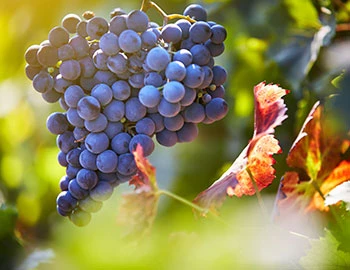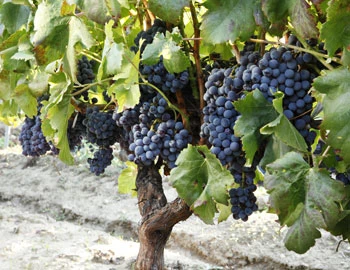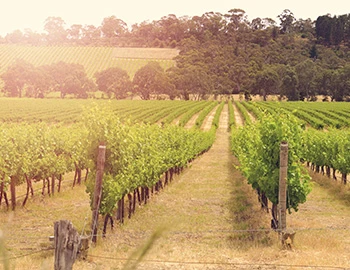
The Moonlight Run 2020
Barossa Valley, Massena, 750 ml

| Grape variety: | Grenache, Mataro, Shiraz |
| Producer: | Massena / Jaysen Collins |
| Origin: | Australia / South Australia / Barossa Valley |
Description
Very seductive, fine and complex aromas of ripe black currants, eucalyptus and subtle smoke. On the palate, in addition to its beautiful freshness, the Moonlight Run presents an opulent texture due to the original old vines. Spicy and supple, Spicy and supple, it is characterized by a long finish of fine sweetness. Massena is about real people in the Barossa Valley crafting wines with provenance, character and stories. Each wine has a life story, born of an idea, a special vineyard, an unexpected seasonal event. The handmade wines are all small batch from vineyards they own and places they know. "The Moonlight Run was our midnight drive back to the Barossa after working vintage in the Clare Valley in 1999. We would crave a soft slurpy wine to wash down a hard night’s work, so we decided to make our own. We take inspiration from Southern Rhone wines and this is our take on them."
Wine enjoyment since 1844!

Selecting wines and spirits has been our great passion for more than 180 years. Every day, we do everything we can to find the perfect wine for every dish, every occasion and every taste.
Attributes
| Origin: | Australia / South Australia / Barossa Valley |
| Grape variety: | Grenache, Mataro, Shiraz |
| Ripening potential: | 2 to 12 years |
| Drinking temperature: | 16 to 18 °C |
| Food Pairing: | Rabbit ragout with olives, Pizza or Flammkuchen, Latin American dishes, Moroccan specialities, Spiced grillades |
| Vinification: | fully destemmed, use of traditional basket press, fermentation in cement tank |
| Maturation: | in used barriques |
| Maturation duration: | 12 months |
| Volume: | 14.5 % |
| Note: | Contains sulphites |
Massena / Jaysen Collins
Dan Standish and Jaysen Collins were college friends, and in the late 1990s they decided to put their talents together to produce wine. Recently, Jaysen Collins has taken charge of the "Massena" project on his own.The grapes are purchased from growers in Greenock, Kalimna and Koonunga Hill in the northwest Barossa Valley.
They are always very old plots and the yields are naturally tiny, but the grapes have an unequalled concentration and complexity. Despite the scorching dry summers, no irrigation is used (a method known as 'dry farming'). The Midnight Run, their first wine, was initially conceived as a wine for family and friends. Its name was inspired by their journeys between Barossa Valley and Clare Valley--during harvest they had to move from one to the other at night and it was then that they had the idea of working together. That blend was based on Grenache from vines over 120 years old. The remainder was Shiraz, Cinsault and Mataro (Mourvedre) in the style of the great Chateauneuf-du-Pape. .

Mataro
Mataro is a synonym for the Monastrell / Mourvèdre vine.

Shiraz
A hint of pepper
The legend stubbornly persists that the Syrah variety came from the Persian city of Shiraz. Yet, researchers have shown that it is a natural crossing of two old French varieties: the red Dureza from the Rhône Valley and the white Mondeuse blanche from Savoy. Wines from Syrah are gentle and concentrated. They smell of dark berries, violets and liquorice, and amaze with a piquant touch of white pepper. As varietal wines, they are found on the northern Rhone, as in the Hermitage or Côte Rôtie appellations, as well as in Swiss Valais. In the southern Rhône Valley, Syrah is often wedded with Grenache and Mourvèdre. In 1832, a Frenchman brought the variety to Australia, where it became the emblem of the national wine industry. There, the weightiest versions develop with typical notes of tar and chocolate.

Grenache
Grenache seldom comes alone
Spaniards and Sardinians make the Grenache contentious: both claim it originated from their country. In fact, it had already appeared in both places by the 16th century. But a large number of mutations in Spain indicates that it has deeper roots on the Iberian Peninsula. The Grenache is meaty and spicy, with a wonderful, fruity sweetness and rich aromas of blackberry, cassis, plums and pepper. Under the name Garnacha, it contributes fullness to the Rioja. In Sardinia it is called Cannonau, where it yields strong, expressive wines. But its stronghold is in France. Grenache is the star in Châteauneuf-du-Pape and streams into many other assemblages from the south. Its preferred partners are Syrah and Mourvèdre. This blend is also very popular abroad. In Australia, these wines are simply called "GSM".

Barossa Valley
Barossa Valley: well-proportioned abundance
The Barossa Valley is the epitome of Australian red wines with lavish fruit richness and focused strength. But the valley is not just a preferred terroir for Shiraz, Grenache, Cabernet, and co. – there are also huge winery facilities where grapes are processed from other cultivation areas in South Australia. Thus, the valley has become a center of Australian winemaking, bringing concentrated yet balanced crops into bottles.

South Australia
South Australia: Shiraz as a driving force
South Australia, with the Barossa Valley as the most well-known cultivation area and the city of Adelaide as a wine metropolis, is without a doubt the centre of the Australian wine economy. The wines produced here have brought the Shiraz from “down under” worldwide recognition. They are fully concentrated wines with dark-berried cassis fruit and masterfully supportive oak wood spices. But Chardonnay, Cabernet Sauvignon, Merlot and Riesling play more than just a supporting role.

Australia
Australia – A rapid rise to the international elite.
Australia, separated from the other continents by oceans for roughly 50 million years, has almost two hundred years of viticulture history. For a long time, Australians pressed their wines for their own use, with simple, undemanding vines. But later the country began to specialize in classic, European varieties. And with great success –Australian wines today enjoy great prestige and are consumed worldwide..


